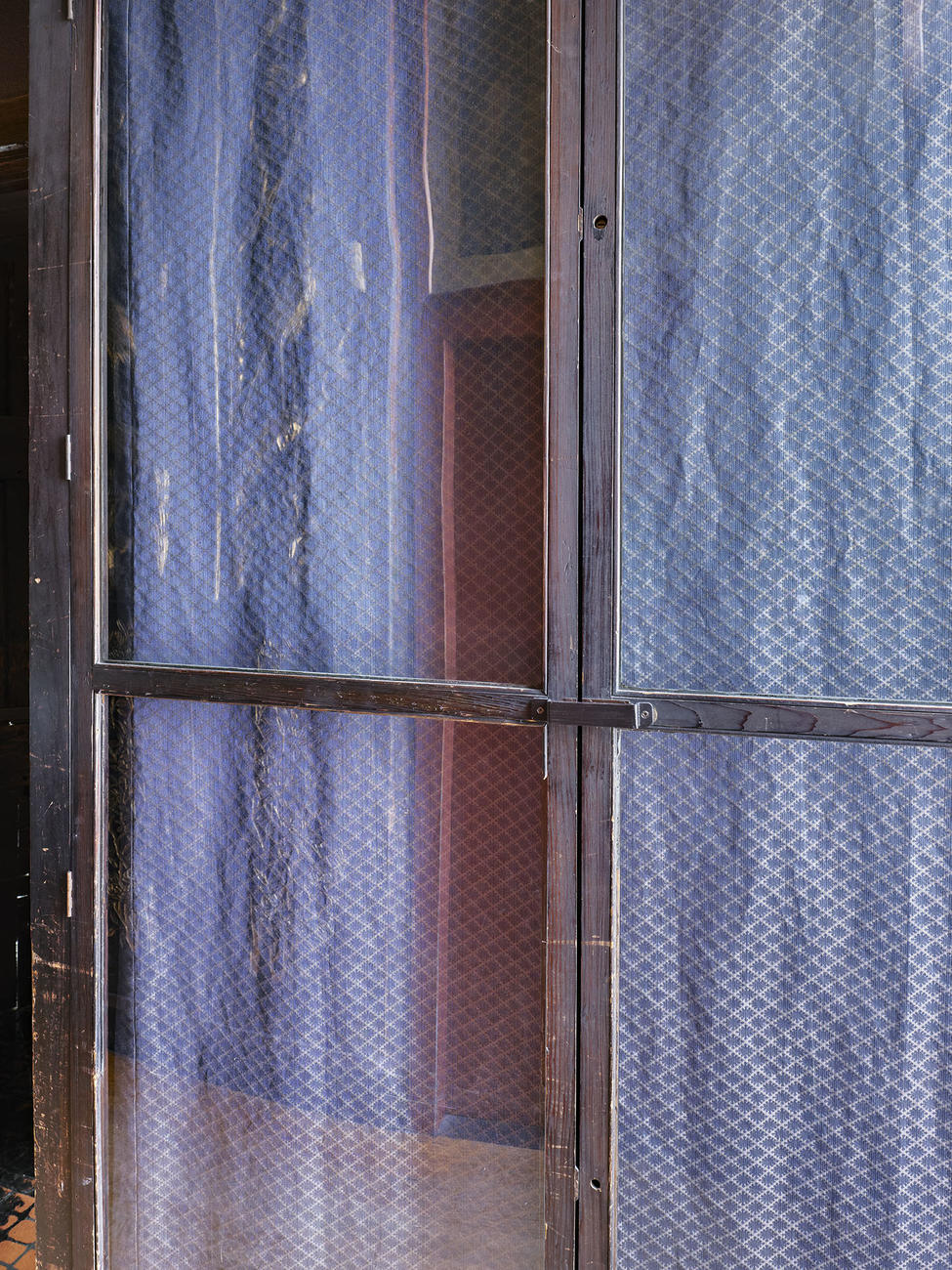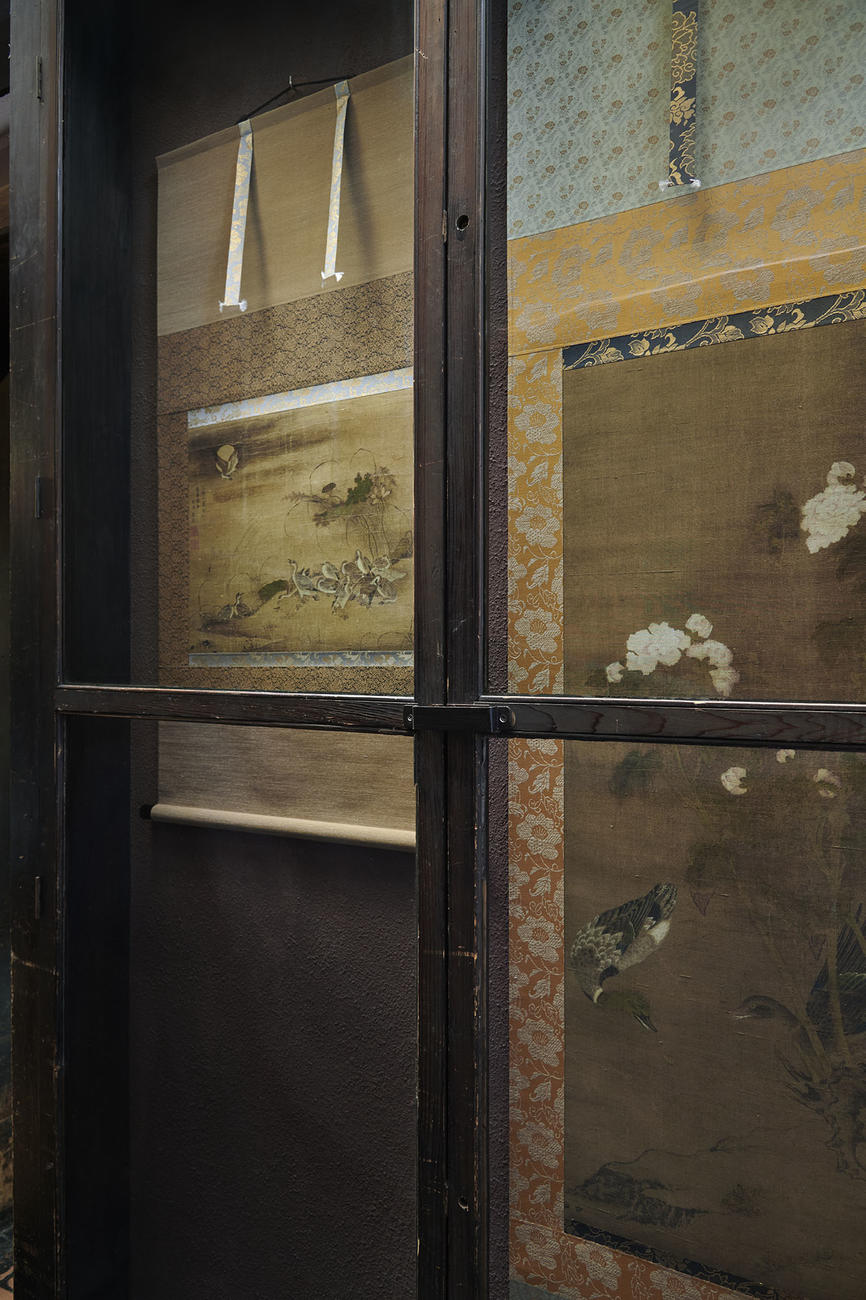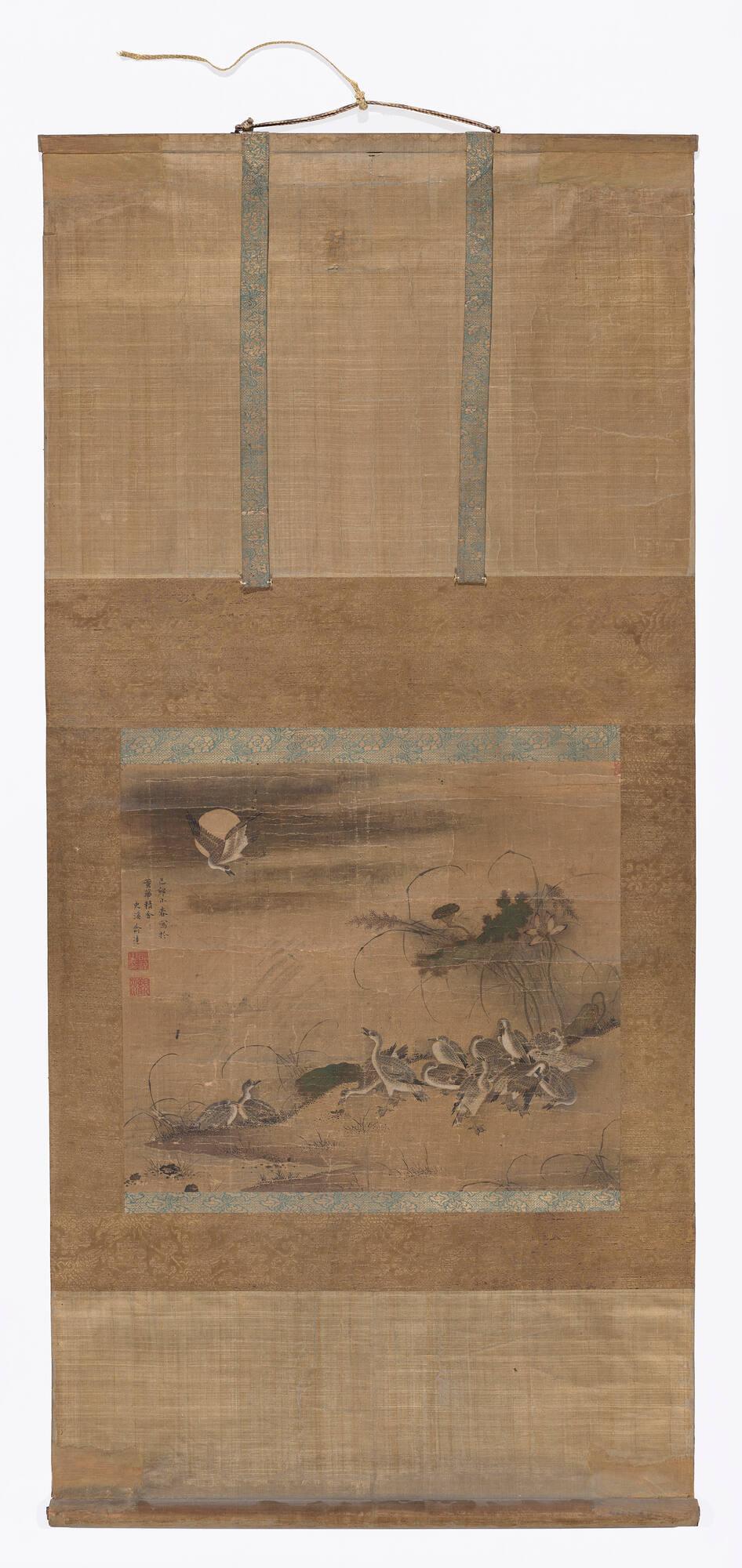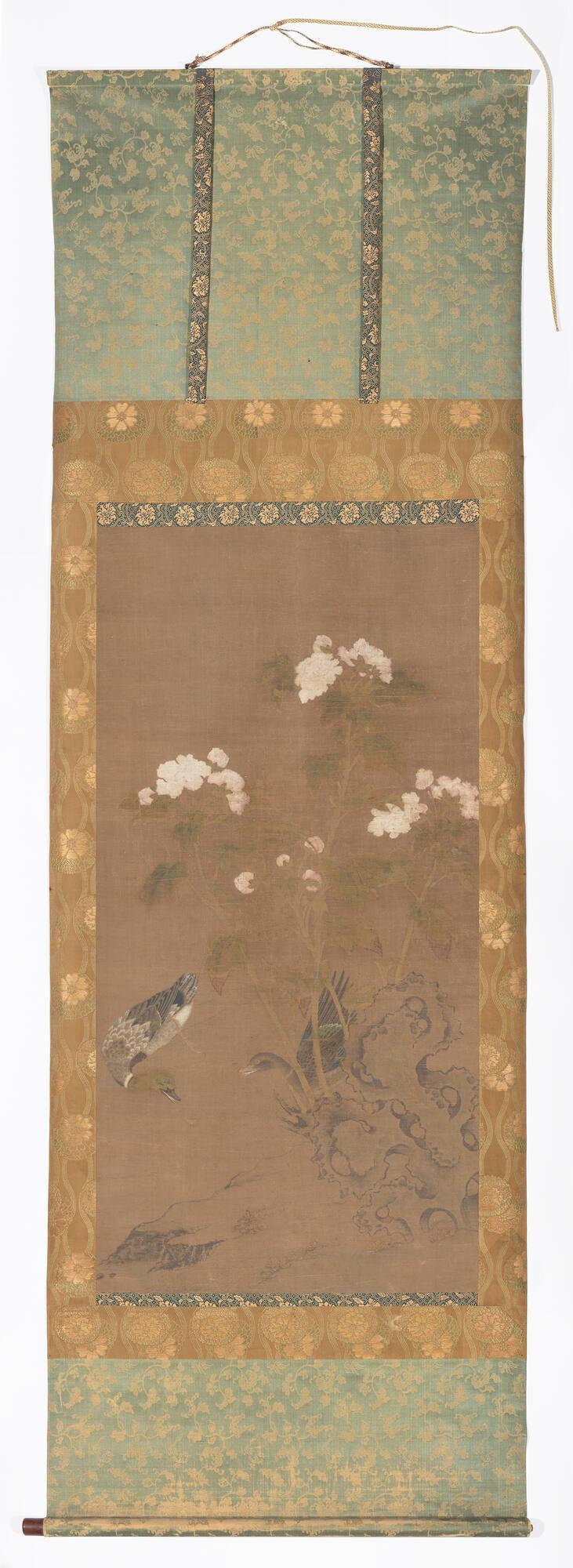Until recently, when the elevator doors opened on the Third Floor Passage of the Isabella Stewart Gardner Museum’s historic building, you saw a shallow case displaying a brown, nondescript textile. Now, you will see two paintings in a shallow case.
Isabella Stewart Gardner Museum, Boston
The display case in the Third Floor Passage in August 2022 and in December 2022, before and after the installation of two reproductions of Yu Da’s Wild Geese and Peonies and Ducks.
On the left hangs a painting of geese in ink and color on silk, wider than it is long. Twelve of the featured birds huddle together along the riverbank, and a pair stands off to the left. A bare lotus seed pod and a pink lotus blossom, well past its peak, emerge on long stems on the right side of the painting, suggesting the autumn season. Meanwhile, the nighttime hour is indicated by a moon against a haze of inky clouds, pictured behind a single goose flying in the upper left corner.
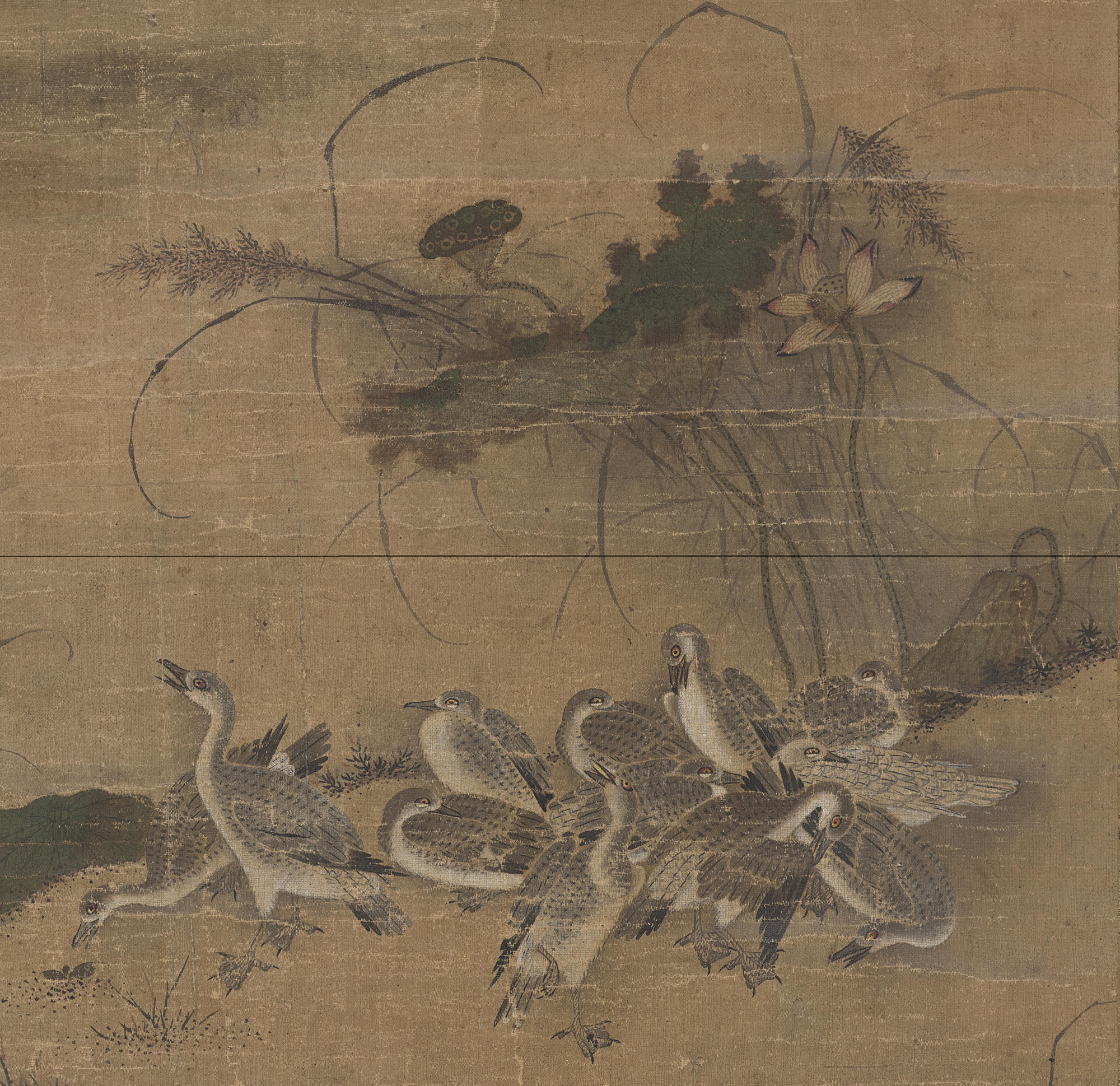
Isabella Stewart Gardner Museum, Boston (P29w5)
Detail of Yu Da’s Wild Geese, showing twelve geese on the river bank
Three lines of text along the left edge of the painting tell us that this painting is by an individual named “Yu Da,” and that it was painted at the Huanghua Monastery.¹ Two square seals have been stamped in red ink below the inscription. The characters are read from top to bottom, right to left. The top seal reads, “Seal of Yu Da,” while the bottom seal reads “Observing [or Meditations on] Water.” It is likely that the seals are associated with the aforementioned Yu Da from the inscription.
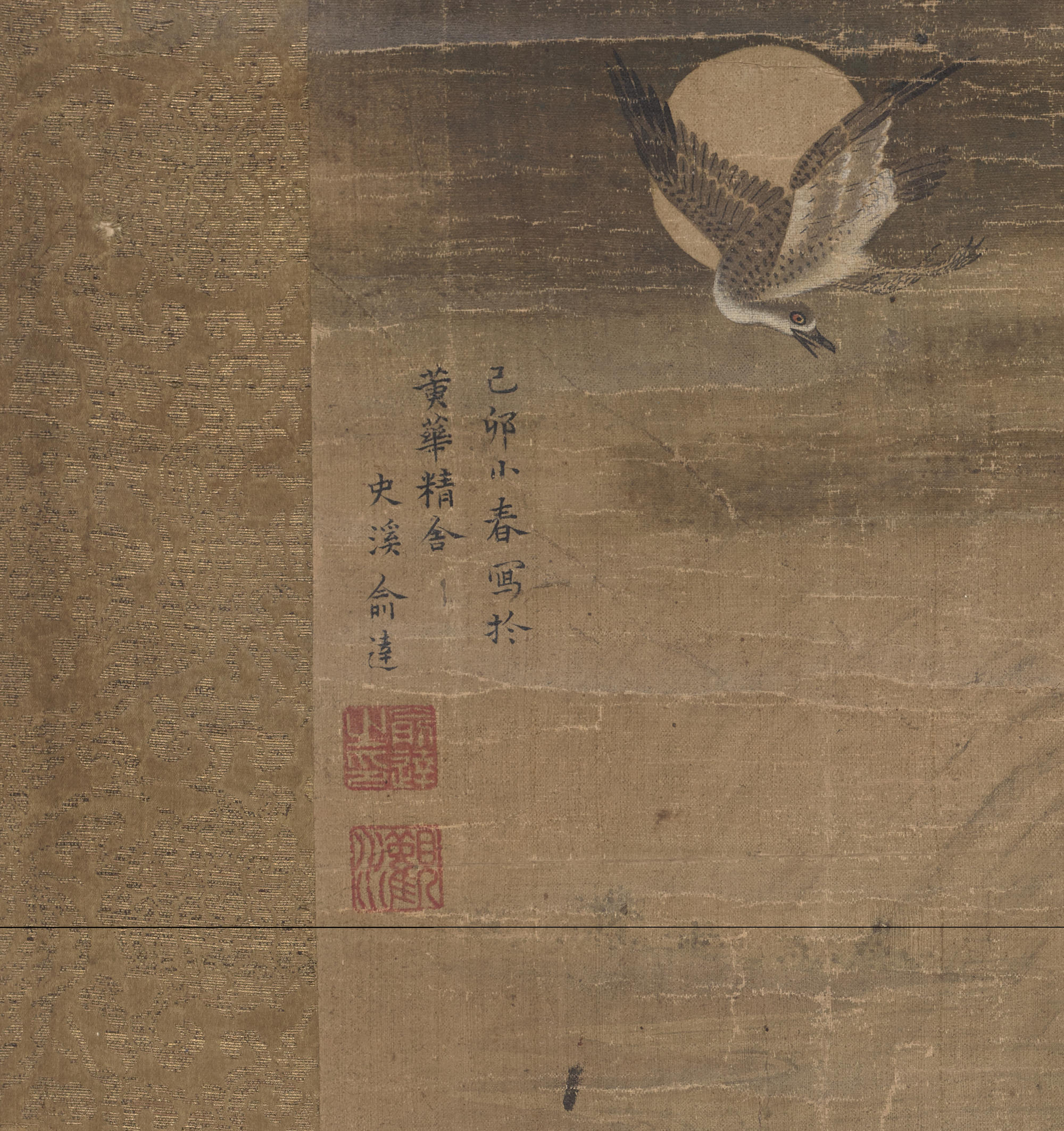
Isabella Stewart Gardner Museum, Boston (P29w5)
Detail of Yu Da’s Wild Geese, showing the inscription and marks
The painting to the right is a hanging scroll also in ink and color on silk, but longer than it is wide. It shows two Mallard ducks swimming below tall stems of pink and white peonies growing from a rock pitted with holes by the river bank. The painting recalls the style established by the early Ming dynasty (1368–1644) painter Lu Ji (about 1450–early 1500s) who is famous for “bird-and-flower” paintings. The imagery in this popular genre of “bird-and-flower” painting is often carefully selected for their cultural meaning. In this painting, the artist paired a male and a female duck, birds associated with happy marriages, with the peony, which is a flower with many associations, including wealth.
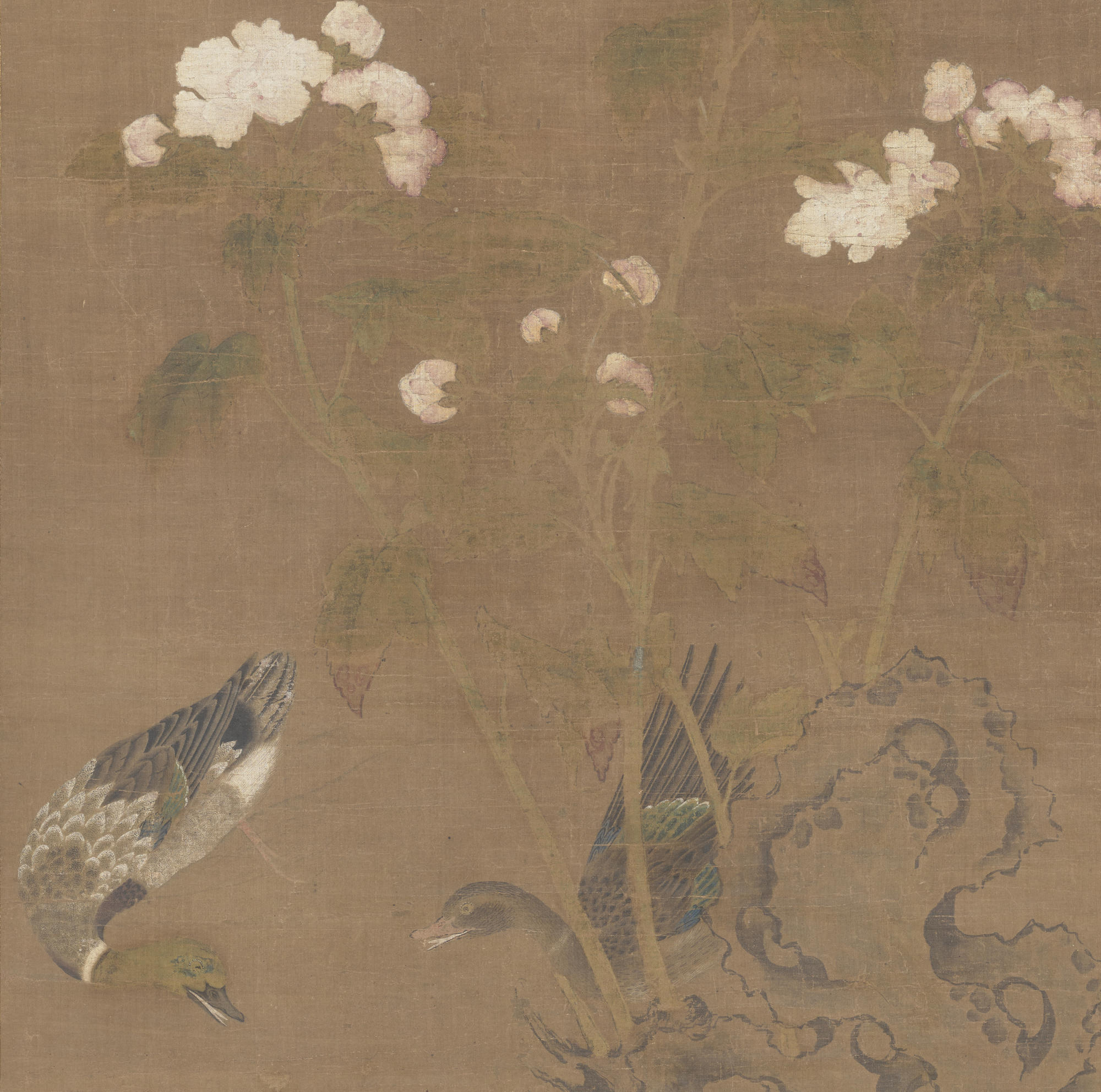
Isabella Stewart Gardner Museum, Boston (P29w6)
Detail of Peonies and Ducks, showing the birds and flowers
Both paintings are closely related to Chinese painting styles. However, they have been mounted as hanging scrolls in the Japanese style. The mounting and the silks likely date to around the time that Isabella acquired the two works, sometime in the late 1800s or early 1900s.
Silk is highly susceptible to degradation from long term exposure to light, air pollutants, and lack of structural support. In order to preserve paintings, such as these, it is best for them to be put into dark storage and only display them for short periods under low light. However, this presents a challenge at the Gardner where the founder stipulated that the “museum remain for the education and enjoyment of the public forever.”
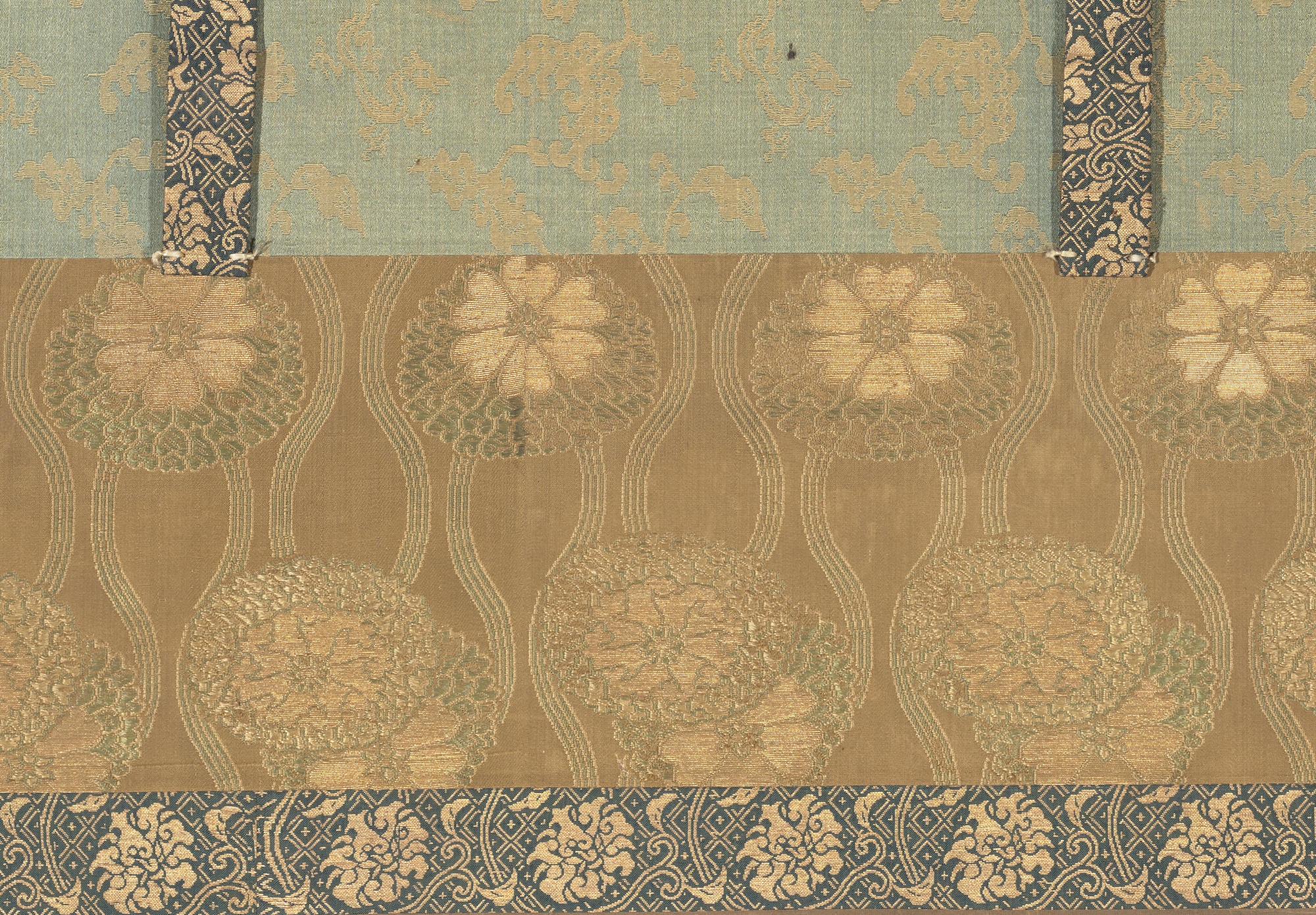
Isabella Stewart Gardner Museum, Boston (P29w6)
Detail of the Japanese style hanging scroll for Peonies and Ducks, showing the silks
For years, these two paintings have been hidden from view behind a textile in their case. This year, in order to recreate Isabella’s original curatorial intent, we have started to think creatively about how to both preserve Isabella’s vision, and also care for the paintings so that they can be viewed for years to come.
The Museum, therefore, installed high quality reproductions in November 2022. The paintings themselves were reproduced using a large format ink-jet printer. The images were printed on sheets of silk backed with paper, allowing them to be run through the printer. These were then sent to a traditional scroll mounting shop in Tokyo, Japan. The mount maker selected several options for the scroll silks, from which our curator chose the ones that best matched the color and style of the originals.
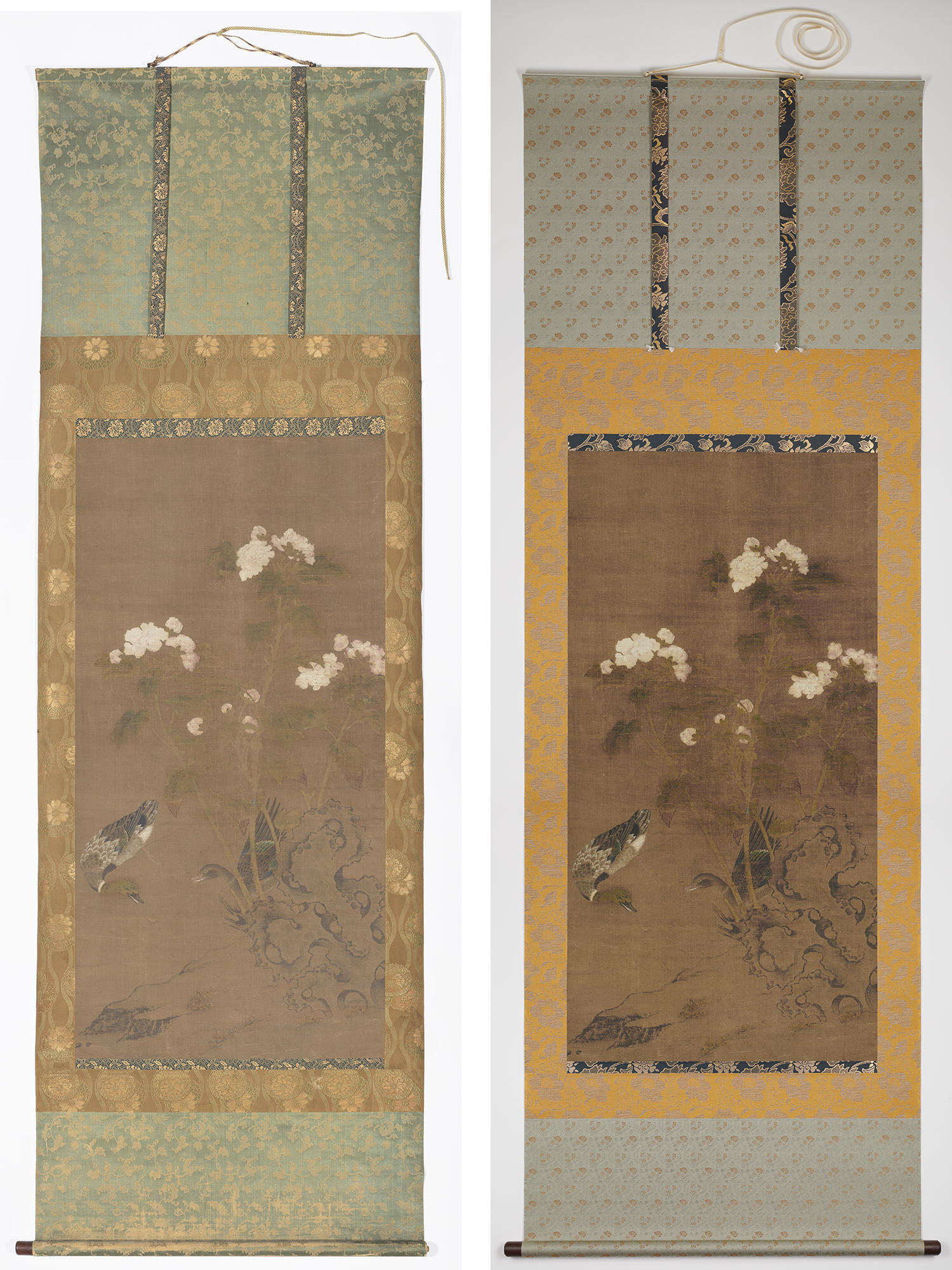
Isabella Stewart Gardner Museum, Boston (P29w6 and P29w6.r.2022)
Chinese, Peonies and Ducks, 16th century (on the left) and its reproduction (on the right)
The original paintings are also currently undergoing conservation treatment to clean their surfaces and stabilize their mountings, which will allow them to be safely displayed in rotation with the remarkable reproductions. This means that when visitors step off the elevator on the third floor they will now be greeted by these painted birds as Isabella intended.
You May Also Like

Read More on the Blog
Shedding Light on the History of Lighting

Read More on the Blog
Isabella’s Journey with Chinese Art

Read More on the Blog
Isabella in China
¹ The inscription also details that the painting was completed during the “xiaochun” of the “jimao” year. “Xiaochun” refers to the 10th month of the lunar year. “Jimao” refers to a specific year in the cyclical sixty year year-naming system. Okakura Kakuzo suggested a date of either 1459 or 1519, based on stylistic analysis, but it is difficult to say precisely when this painting was completed.
